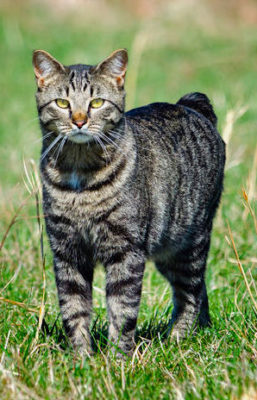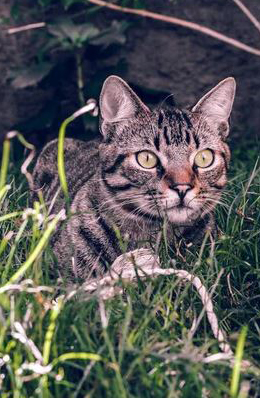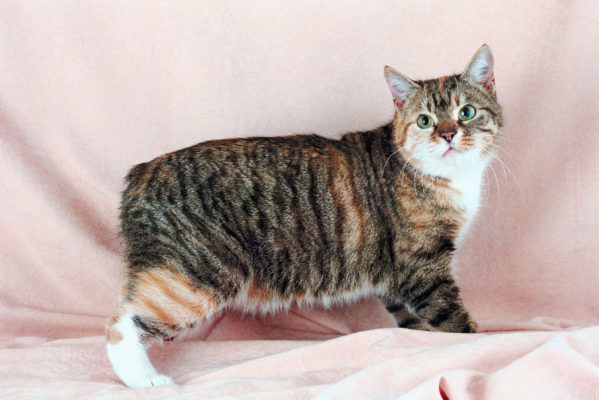Manx
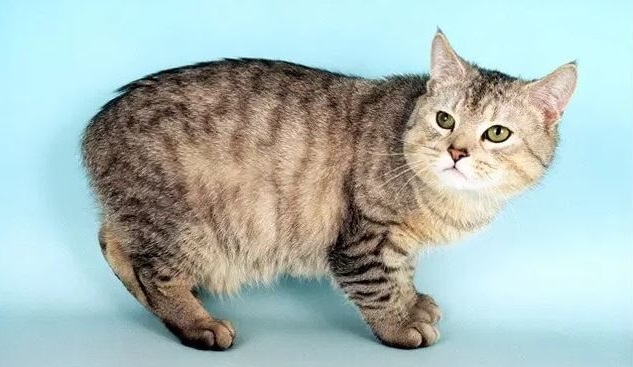
The Manx is a cheerful and mischievous cat who is no stranger to hunting instincts. The pet can turn into a real guardian of your property. He will attack other people’s dogs and catch rodents. With other pets, the cat gets along well, as long as they are peaceful.
Table of Contents
Breed Information
| Origin | United States |
| Size | 20-26 cm |
| Weight | Males 4.5-5.5 kg Females 3.5-4.5 kg |
| Fur Type | Short-haired |
| Color | All colors except chocolate, lilac, siamese |
| Lifestyle | Outdoors, indoors |
| Lifespan | 12-14 years |
| FIFe Classification | Category III: “Short-haired and Somali” Breed designation – MAN |
| WCF Classification | Group 3: “Short-haired” Breed designation – MAN |
| TICA Classification | MX |
| Group | Short-haired cats |
| Price | $400-600 |
Breed Photos
Origin History
The Manx cat first appeared on the island of the same name in the 19th century. The breed was formed naturally, having the roots of the British Shorthair. There is a legend about how the cat lost its tail. According to it, during the Great Flood, Manx was the last cat to run into the ark, and a door pinched its tail.
In 1871, the cat was first shown at an exhibition. And 30 years later, a club of Manx cat lovers appeared. In 1903 the first standard of the breed was published. In the thirties of the twentieth century, the Manx spread across the United States and Scandinavian countries. For a long time, the cat was not recognized because of the tailless gene. Now the breed is recognized by all reputable felinological organizations.
Appearance
The Manx is a medium-sized cat that lacks a tail. The pet’s abdomen is sunken, and it’s back is short. The head is round and large. The nose is medium length, and the cheeks are developed. The round eyes are slightly slanted; the color should match the coat. Medium length ears set high, tips slightly pointed.
The hind paws of the Manx are longer than the front paws. There should be a dimple in the area of the tail. The hair of the cat is short with a thick undercoat. Any color is allowed, except the chocolate, purple and siamese color.
Character
Manx is a cheerful and mischievous cat who is no stranger to hunting instincts. The pet can turn into a real guardian of your property. He will attack other people’s dogs and catch rodents. With other pets, the cat gets along well, as long as they are peaceful.
The Manx cat itself is devoid of aggression. It is a gentle and affectionate family pet. It becomes very attached to its owner and does not tolerate separation. The pet loves to play and be the center of attention. It is wary of children but not hostile. If you explain to the baby how to behave with a cat, they will become friends and play together. Menkes is perfectly adapted to changes in the environment. They can easily move and travel long distances.
Care
The cat can live both in an apartment and in a country house. The second option is even more suitable. It will be important for the hereditary hunter to feel free. It will essentially replace your watchdog.
Manx hair is short but has a thick undercoat. It requires weekly combing. You should bathe your pet once every three months. Use a special shampoo for this.
Keep your cat’s teeth healthy. Brush them three times a week with veterinary toothpaste. Every ten days, trim the claws. Don’t forget to check your cat’s ears and eyes and keep them clean. In case of sour eyes, flush them with tea or a special product.
Education
The Manx cat is characterized by a high level of intelligence and obedience. There should be no problems with its upbringing. It gets used to the litter box and scratching post early. The pet always understands what is required of it.
You can teach him tricks and simple commands. Some pets can learn the command “fetch”. The main thing in training is not to overload the pet with material and not to shout at him. Explain commands calmly and unhurriedly. Motivate the cat with food and stroking.
Common Diseases
In general, the Manx is in good health. But there are many genetic abnormalities due to their body structure:
- coccyx arthritis;
- corneal dystrophy;
- pyoderma;
- Manx syndrome.
The latter disease is seen in 20 percent of cats. It manifests itself in a short spine, defects in the urinary tract, and digestive problems. With this disorder, the cat will not live more than four to six months.
The missing tail gene can cause problems with the spine. If it is inherited from both parents, the kitten does not live even a few months. Most diseases can be diagnosed at an early age. Take your cat to the vet regularly and get her vaccinated.
Nutrition
An important component in the proper development of a Manx is nutrition. From two to three months of age, the kitten can be fed wet industrial food. Dry pet food can also be fed at the age of six months. However, it is best to feed the Manx with natural food.
Protein products should make up at least 80 percent of the cat’s diet. Chicken, veal, rabbit, beef, and by-products will do. Boiled porridges and soups are a good addition. For a change, give the cat cheese and kefir, as well as fruits and vegetables. It is categorically contraindicated to give the pet salty, sweet, smoked, and fried foods. It is also not recommended to feed flour and leftovers from the table.
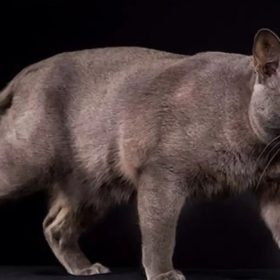 Korat
Korat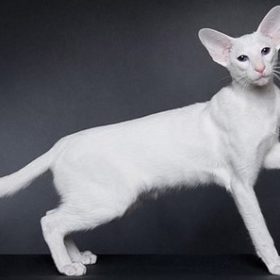 Foreign White
Foreign White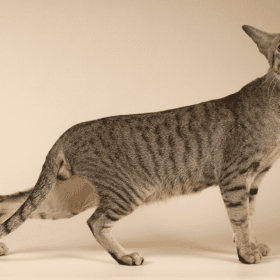 Oriental Shorthair
Oriental Shorthair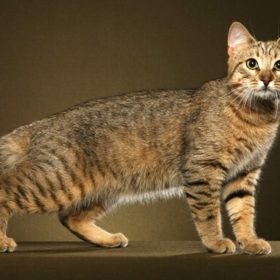 Pixie-bob Shorthair
Pixie-bob Shorthair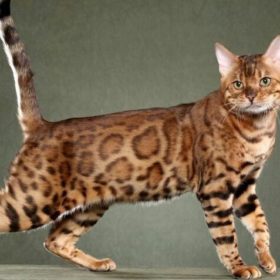 California Spangled
California Spangled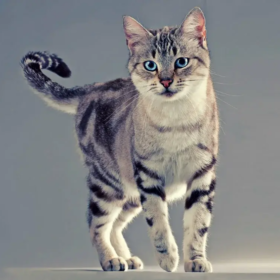 Asian (Tabby)
Asian (Tabby)